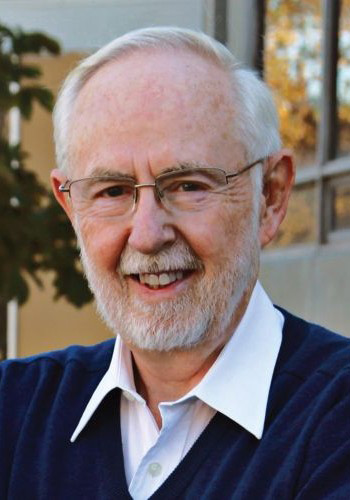3 NOBEL LAUREATES

3 NOBEL LAUREATES

Prof. Gerardus't Hooft
Prof. Gerardus't Hooft is regarded as one of the most influential particle theorists in history, playing a leading role in the renaissance of high-energy physics.
Topic
Education and collaboration in fundamental science as bridges between nations
Time
14:00, Friday, November 14, 2025
Venue
Chang Yeo Lan International Conference Hall, Hsu Shou-Chlien International Conference Center
Biography
PROF. GERARDUS ’T HOOFT is a Dutch physicist who is regarded as one of the most influential particle theorists in history, playing a leading role in the renaissance of high-energy physics. He shared the 1999 Nobel Prize for Physics with Prof. Martinus J.G. Veltman for their development of a mathematical model that enabled scientists to predict the properties of both the subatomic particles that constitute the universe and the fundamental forces through which they interact. This work facilitated the finding of a new subatomic particle, the top quark, and established the standard model of high-energy physics. Gerardus ‘t Hooft was a student of Prof. Veltman at the University of Utrecht at a time when the fundamental theory of particle physics, known as the standard model, did not provide for detailed calculations of physical quantities. In the 1960s scientists had formulated the electroweak theory, which showed theoretically that two of the model‘s fundamental forces, electromagnetism and the weak nuclear force, could be viewed as products of a single force, termed the electroweak force. The electroweak theory was without a mathematical foundation, however, and in 1969 Professors ’t Hooft and Veltman undertook to change it into a workable theory.

Prof. Arthur B. McDonald
Prof. McDonald’s discovery has led a new generation of scientists to re-examine the role played by neutrinos in the evolution of the Universe.
Topic
Answering existential questions about our Universe and its evolution
Time
14:00, Monday, March 9, 2026
Venue
Chang Yeo Lan International Conference Hall, Hsu Shou-Chlien International Conference Center
Biography
PROF. ARTHUR B. MCDONALD is a Canadian astrophysicist and the director of the Sudbury Neutrino Observatory Collaboration who was awarded the Nobel Prize for Physics in 2015 for his discovery that neutrinos – sub-atomic particles considered the basic building blocks of the Universe - can change their identities as they travel through space, from the core of the sun to Earth. Billions of neutrinos are coursing through our bodies every second, but they very seldom interact in our lifetime. For many years they were assumed to be mass-less and immutable, but Professor McDonald’s discovery proved the existence of neutrino oscillation for solar neutrinos and indicated that the Standard Model for Elementary Particles is incomplete and requires changes. This has led a new generation of scientists to re-examine the role played by neutrinos in the evolution of the Universe. Professor McDonald’s type of experiments have thus become some of the most promising, powerful, versatile and efficient ways to explore both particle physics and the universe itself, and he continues his research in neutrinos and Dark Matter at SNOLAB in a 2,100 meters underground mine outside Sudbury, Ontario.

Prof. Ryoji Noyori
Professor Noyori’s research provides a powerful tool for large-scale industrial applications and for the synthesis of antibiotics and other pharmaceutical products.
Topic
Chemistry is the science of value creation
Time
14:00, Friday, March 20, 2026
Venue
Chang Yeo Lan International Conference Hall, Hsu Shou-Chlien International Conference Center
Biography
PROF. RYOJI NOYORI is a Nagoya University based Japanese chemist, who was awarded the Nobel Prize in Chemistry in 2001 for the development of chirally catalyzed hydrogenations. His catalytic methods provide a powerful and versatile tool for creating enantiomerically enriched compounds, which is crucial for many areas of modern chemistry and medicine. They are used for the synthesis of chiral molecules, particularly in the pharmaceutical, agrochemical and fine chemical industries, as they enable the selective production of one enantiomer (a chiral molecule's mirror image) over another, which is crucial because many drugs and other biologically active compounds are chiral and their effectiveness can be enantiomer-specific. Professor Noyori’s work has enabled the production of various types of medication such as naproxen, a nonsteriodal anti-inflammatory drug, and the antibacterial agent levofloxacin His catalysts were suitable for large-scale industrial applications, and they found wide use in the synthesis of antibiotics and other pharmaceutical products. Professor Noyori has acted as President of RIKEN, one of Japan’s largest research institutions, and as Director-General of the Center for Research and Development Strategy at the Japan Science and Technology Agency.
Sitemap
Contact Us
- Lijiao Guan
- aj@oa.tku.edu.tw
- 02-26215656 ext.2905
- 12/25/2025


